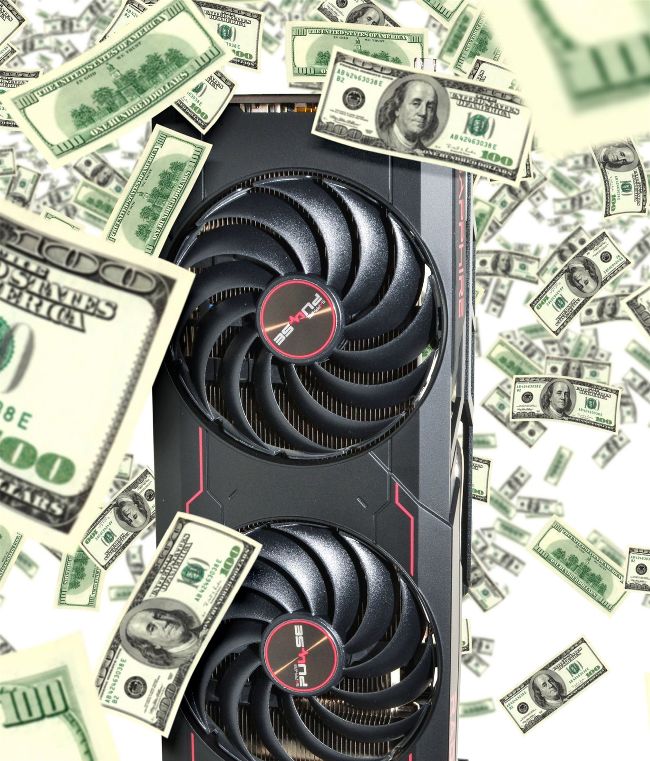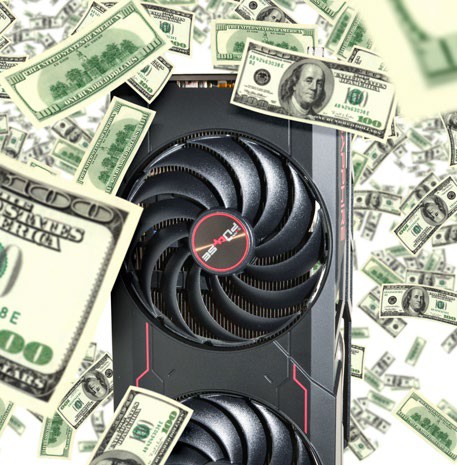the great graphics card bubble
THE GREAT GRAPHICS CARD BUBBLE
GPU prices have been ridiculous for years. Jeremy Laird investigates how we got here and if we could return to “normal” pricing

© GETTY IMAGES/FUTURE PLC
Why, exactly, are graphics cards so expensive? With every new GPU launch comes the same refrain: nice card, shame about the price. Everyone seems to agree that PC graphics cost too much, so are $600 GPUs the new mainstream reality? Is there no going back on fourfigure prices for higher-performing boards? Or is there hope for something approaching a return to what you might call historical pricing models?
The good news is that graphics card prices today are lower than they were 18 months ago. Back then, mid-range cards cost over $1,000, and anything remotely high-end was megabucks. But all that was a consequence of some once-in-ageneration factors, not least of which were the pandemic, a cryptocurrency craze, and a war in Europe.
But the impact of those events, on the graphics card market, at least, has largely—if not entirely— passed. But here we are in 2023, and certain GPU models are still priced at nearly double their immediate predecessors. So is this all just a long, painful hangover, and prices are trending back to historical norms? Or has something fundamentally changed in PC graphics?

IF THE QUESTION WE’RE ASKING HERE is what the heck is going on with GPU prices, the first and most obvious observation is that graphics cards are now outliers in the PC hardware market. The pandemic and war in Europe had very broad impacts on everything from supply chains to demand for stay-at-home technology, as well as inflation in a general sense. Some of that influence is ongoing, especially currency inflation. But when it comes to PC hardware, it’s mostly history. For proof, look no further than prices for all manner of components. Take SSDs. They’re now cheaper than ever, with market research indicating that the cost of an SSD tumbled by around 15 percent in the first quarter of 2023 alone, with further falls predicted for the rest of the year. You can now get a fast 1TB SSD for about $50. A really high-spec 1TB drive is yours for under $100.
System memory—or RAM—has been going the same way. Even the latest DDR5 kits are now dirt cheap. 16GB for $50? No problem. In fact, pretty much everywhere you look, hardware prices have fallen back towards historic pre-pandemic trends. Okay, there are plenty of premium products out there. The new generation of OLED monitors looks pretty pricey, as do a lot of displays with mini-LED backlights. But you can also snag a 240Hz refresh 1080p monitor from a big brand for about $150.
For less than $250, you can upgrade to 1440p and 27 inches, and still with decent 165Hz refresh. Likewise, 4K 60Hz monitors for productivity are now so cheap, they’re almost giving them away. Probably the most directly comparable market is CPUs, and those too are priced very much in line with historical levels, especially if you take broader inflation into account. Intel’s Core i5-12400 is probably all the CPU most of us need, and it’s yours for $185. Even the Intel gamer’s choice, the 12600K, is only $250. That is far from unreasonable or out of line with historical norms.